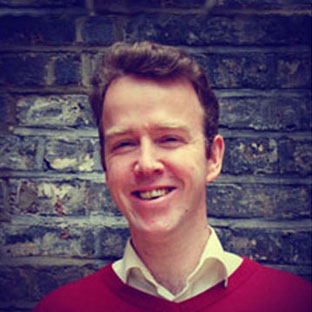I am very much looking forward to chairing tomorrow's event featuring neuroscientist Tali Sharot where she will be speaking about her book The Optimism Bias: Why We're Wired to Look on the Bright Side.
The sub-heading is important, reminding us, no doubt intentionally, of the famous Monty Python Sketch which has to be one of the most inspired endings to a film, ever. ( My favourite line is: "Always look on the bright side of death, just before you draw your terminal breath...")
If you don't have time to read the book, and don't have a place at the event, you can read an extract of the book here, or, failing that, read on.
The book is a very comfortable read, and contains many arresting and profoundly important ideas. The idea with perhaps the greatest relevance to the RSA is in chapter four, which is about the curious co-existence of private optimism and public despair. Crudely, we invariably think the world is falling apart, but that we are going to just fine.
This curious fact, repeated in countless studies, is the empirical basis behind the RSA's efforts to narrow or close 'The Social Aspiration Gap', which I think of as the gap between our aspirations for the world we live in, and the world we are currently complicit in creating through our actions(or lack of them). I have noticed that Matthew Taylor tends to apologise for using the term, 'social aspiration gap' on the grounds that it is inelegant or jargony, but personally I find it a very clear and compelling expression. Indeed, it was one of the main reasons I decided to join the RSA.
Our expectation regarding the future of our society will be positive or negative depending on which view feeds private optimism best - Tali Sharot
In a fascinating paragraph towards the end of chapter four, Tali Sharot builds on the idea that private optimism is an adaptive trait that we need to survive, and that it is important enough to lead us to distort evidence in whatever way will protect it (from page 71, slightly abbreviated):
"At the end of the day, our expectation regarding the future of our society will be positive or negative depending on which view feeds private optimism best. During tranquil times, public pessimism may fuel private optimism by way of comparison. So when the world is doing okay, having a pessimistic view of society while maintaining optimistic beliefs about our own future means that not only do we expect to do better; we expect to do better while others do badly. This gives us the illusion of superiority. It does not mean we are ill-wishers; it merely suggests that the rosy spectacles we use to view our future are not worn when examining the future of fellow citizens. In fact, we often use dark shades to assess the future of our country.
However, when society reaches unprecedented lows that affect our personal lives directly, the only way for our situation to improve is to take the rest of the world upwards with us....this is the time that people turn to bearers of good news such as Barack Obama...that is when optimism sweeps the world. Or at least it does until the economy stabilises, at which point we are quite happy to go back to public pessimism."
To fully make sense of that claim, and how it links to the social aspiration gap, you will need to read the book, or return here soon after the event when I hope to report back.
P.S. Having recently been seduced by Twitter, I now know why I should say that the hash tag for the event is #RSAsharot.
Related articles
-
Imagining a better future through foresight – why the metaphors we use matter
Adanna Shallowe
As we begin to imagine the post-pandemic world, we need to challenge our use of old metaphors to allow for new narratives and better futures to emerge.
-
Polarised: The RSA podcast exploring the politics of division
James Shield
Is it really true that we’ve never been more divided as a society? And if it is, how did it happen and what can be done?
-
How can we give up bad habits for good?
Ian Burbidge
With the post-Christmas resolutions looming, when we try to address the worst of our seasonal over-indulgences, the question remains: how can we give up bad habits for good?




Be the first to write a comment
Comments
Please login to post a comment or reply
Don't have an account? Click here to register.